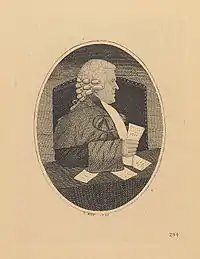William Bannatyne, Lord Bannatyne
Sir William Macleod Bannatyne, Lord Bannatyne FRSE (26 January 1743 – 30 November 1833) was a distinguished Scottish advocate, judge, antiquarian and historian.

Life
The son of Mr. Roderick Macleod, writer to the signet and Isabel (fl. 1736–1744), daughter of Hector Bannatyne of Kames. He received a liberal education, including a period at the High School of Edinburgh (1755-6), and was admitted advocate, 22 January 1765. He was appointed Sheriff of Bute in 1776. On the death of Lord Swinton, in 1799, he was promoted to the bench, and took his seat as Lord Bannatyne.
Among his intimate friends were Henry Mackenzie, Robert Cullen, William Craig, Hugh Blair, Erskine and Alexander Abercromby. He was a member of the Mirror Club and Lounger Club, at the end of the eighteenth century.
In 1784 he was a co-founder of the Highland Society.
He assumed the name of Bannatyne when he succeeded, through his mother to the estate of Kames in the Isle of Bute. He extended Kames Castle by the addition of a fine mansion house in the early eighteenth century. He sold the Kames estate in 1812 to James Hamilton, and moved to Edinburgh.
He retired in 1823, when he was knighted. He died at his home, Whitefoord House on the Canongate section of the Royal Mile in Edinburgh in 1833. He is buried in Greyfriars Kirkyard in the centre of Edinburgh.[1]
He collected a library of historical, genealogical, and antiquarian works, and at its sale in 1834, a set of the Bannatyne publications was purchased for Sir John Hay, Baronet of Smithfield and Haystown, for one hundred and sixty-eight pounds sterling.
See also
- Bannatyne manuscript (Clan MacLeod), attributed to William Bannatyne, Lord Bannatyne
References
- MyClan.com. "Bannatyne Clan". Archived from the original on 19 March 2007. Retrieved 7 April 2007.
- Scottish Nation. "Bannatyne". Retrieved 7 April 2007.
- Macleod, E.V. Oxford Dictionary of National Biography. Retrieved 7 April 2007.